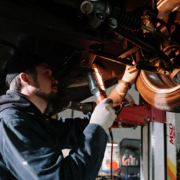Have you ever driven your car and noticed the red engine light come on? You probably freaked out, didn’t you? But what if there was a way to avoid this unnecessary stress? There actually IS a way, you fool! In this guide we are going to talk about how to understand what each gauge is telling you, and then how to use gauges for a healthy car.
Many people are not really sure how gauges work. Many of these people have no idea what they should be checking and monitoring either. I’m going to show you how to use the gauges on your car to make sure you have a healthy car.
Did you know there are so many things that can go wrong with your car? I mean, there are so many different settings and variables. When was the last time you took your car in for an oil change? Whenever that was, was it too long ago? This article will help you understand gauges and how they can help you to keep your car in a healthy state.
As a vehicle owner, it’s essential to know your car inside and out. Checking gauges is one way to keep your vehicle in top working order.
Table of Contents
Drive Carefully

Attention to details is what sets the best drivers apart from everyone else on the road. This means even the smallest of details, like checking your tire pressure before you get in and get going. After all, it’s these little details that ensure you can drive safely. And a safe drive is just one way to protect your car and keep it healthy.
Check Your Oil Levels

The oil in your car is essential to helping maintain a healthy car, so be sure to check your levels. Your vehicle should be running when checking the oil level to get an accurate reading. Once your engine is warmed up, locate the dipstick and pull it out. Wipe it clean with a lint free cloth place the stick back into the engine, then remove it again and read the dipstick. The bottom of the “H” is where your oil level should fall between. Add more oil as needed.
If your car’s having difficulty starting or has performance issues, it might be time to check the oil levels.
Check Coolant Level

There are numerous components under the hood of your car that play essential roles in how it functions. These components require certain levels of fluid, if not, your car will not function to its potential and may further damage other parts of your car. Your vehicle’s radiator coolant is just one of many fluids that need to be checked every once in a while. In fact, it’s something you should check with every oil change. Checking Coolant Level keeps your engine cooler and running at the right temperature for optimum efficiency.
Test Battery

No matter how well you care for your car, over time your battery will begin to run down. The best course of action is to be proactive and test the condition with multimeter tester. Our multimeter features a large LCD display making it easy to read and understand the results, as well as an auto-off function that makes it convenient to use anywhere. Knowing the health of your battery will help you catch possible issues before they happen, protecting you from that unwanted breakdown.
Test Brake Pads And Rotors

As time goes by and miles accumulate, brake parts wear out and need to be replaced—so it’s a good idea to inspect them regularly. The Autel MaxiTPMS TS408 test generates the AUTEL exclusive All-in-One screen without additional accessory required. It features dual-receiver design to allow wireless sensor activation and wireless sensor programming. This is designed to make up for a defective TPMS module or activate sensor in all TPMS-equipped vehicles.
The APA Blue Brake service, including replacing your brake fluid, is among the most important things you can do to keep your car healthy. Deteriorated brake fluid can cause fading and compromise the performance of your brake system. Our APA Blue Brake Service includes a complete visual inspection to make sure everything’s in working order. And if any issues are discovered, our certified mechanics will discuss them with you before proceeding.
Using These Gauges Monthly Will Help You Push Your Car Further Down The Road Of Natural Aging:
Fuel Gauge

Your car’s fuel system is a finely tuned instrument needed to operate properly. A properly functioning fuel gauge is part of that system and alerts you to the gas level in your tank. A faulty fuel gauge can give you inaccurate readings, or it could stop working altogether, causing you to guess how much fuel is left in your car. It is important that you keep your fuel gauge in good working order so that you can be certain of the amount of gas left in your tank.
Speedometer

This gauge basically measures how fast you are going. Obviously, it is illegal to speed, but this gauge is useful for keeping track of your speed so you can avoid getting a ticket. The most common method of measuring speed is with a sensor that rotates as the tire turns. This type of speedometer is prone to failure if the tire loses pressure or if the sensor stops rotating. Some newer vehicles instead rely on GPS-based systems to measure speed, which are less prone to error but also tend to be less accurate if they lose GPS signal.
Temperature Gauge

It’s a digital thermometer for your car. But not just any thermometer. It reads the temperature outside so you can adjust the interior heat for a comfortable and healthy ride. And because it’s small and compact, it fits anywhere in the car. Mount it on your dash, window, or visor – wherever it’s most convenient.
If you love your car, take care of it and keep track of its temperature with this gauge!
Oil Pressure Gauge

The oil pressure gauge is a must-have for your car’s health. It measures the oil pressure and makes sure it has optimal level so that the engine can work perfectly. This product is a perfect replacement for your old or broken gauge, and specifically engineered to measure oil pressure ranging from 0 – 5 Bar.
This oil pressure gauge is built to keep your car’s engine healthy and properly running.
Conclusion
Most gauges on the dashboard of your car do not need to be adjusted or checked until you take your vehicle in for a maintenance inspection. That said, some gauges will undoubtedly need to be monitored, and hopefully this article has given you a better idea of how to go about doing that. Of course, if you feel like you need assistance working on any of these tasks, don’t hesitate to contact a mechanic—especially if it’s been a while since you last worked on your car. Just make sure you find someone with good reviews and a solid reputation, and as always thanks for reading!







Comments